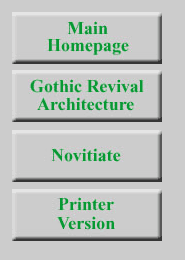The Bech PropertyIn the mid-1800s Edward Bech, a Danish immigrant, purchased 65 acres of land along the Hudson River which he named the Rosenlund Estate. The grounds were developed circa 1865, during a period when major tracts of Hudson River land were being purchased by wealthy businessmen for country estates. Bech was a partner in the Poughkeepsie Iron Works Company, a thriving riverfront industry that prospered with the advent of the Delaware and Hudson Canal and Railroad. He was also a partner in the Cunard Steamship Company and from 1842 to 1858 was the first Danish Consul in New York.
Due to Bech's death in 1873, Lienau's design for the main house was never executed; however, Greystone, St. Peter's, and the Gate House survive as the few remaining examples of Gothic Revival Estate architecture along the Hudson River. All three buildings have been listed on the National Historic Register. In 1905 the Marist Brothers purchased the McPherson Estate just north of the Bech property and established St. Ann's Hermitage. In 1908 the Marist Brothers acquired the Rosenlund Estate, joining the two properties to form the core of the present Marist College campus. |
 A
friend and fellow countryman of Bech's, Detlef Lienau, was a prominent
architect. Bech commissioned Lienau to design a main house of stone
as well as several out buildings for his estate. The European-educated
Lienau had come to New York in 1848 and established himself as one
of America's leading architects. His design of the first example
of the French Second Empire style in New York and the introduction
to America of the mansard roof typified by the French chateau were
among his many achievements. He also was a co-founder of the American
Institute of Architects and actively participated in its formative
years.
A
friend and fellow countryman of Bech's, Detlef Lienau, was a prominent
architect. Bech commissioned Lienau to design a main house of stone
as well as several out buildings for his estate. The European-educated
Lienau had come to New York in 1848 and established himself as one
of America's leading architects. His design of the first example
of the French Second Empire style in New York and the introduction
to America of the mansard roof typified by the French chateau were
among his many achievements. He also was a co-founder of the American
Institute of Architects and actively participated in its formative
years.